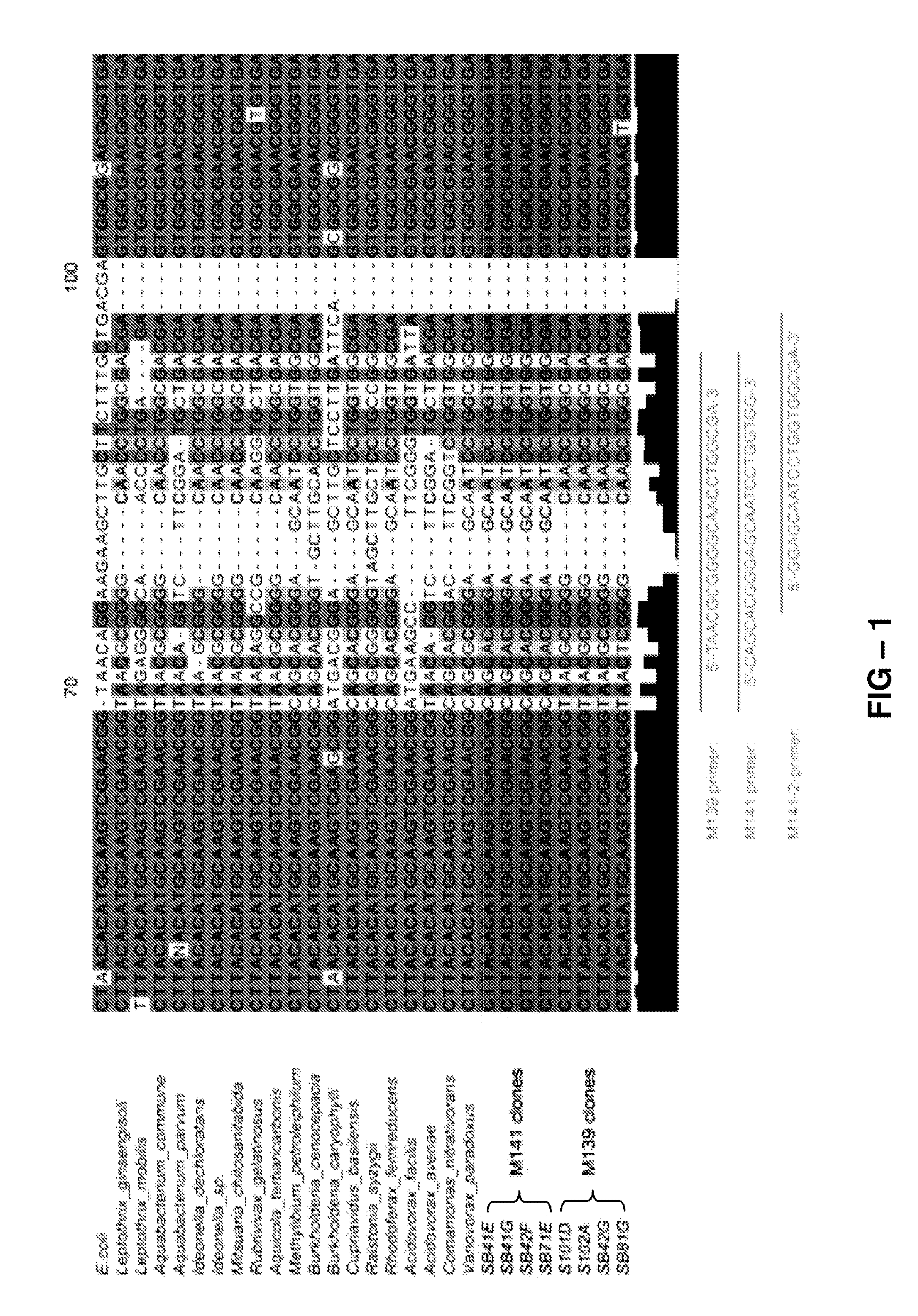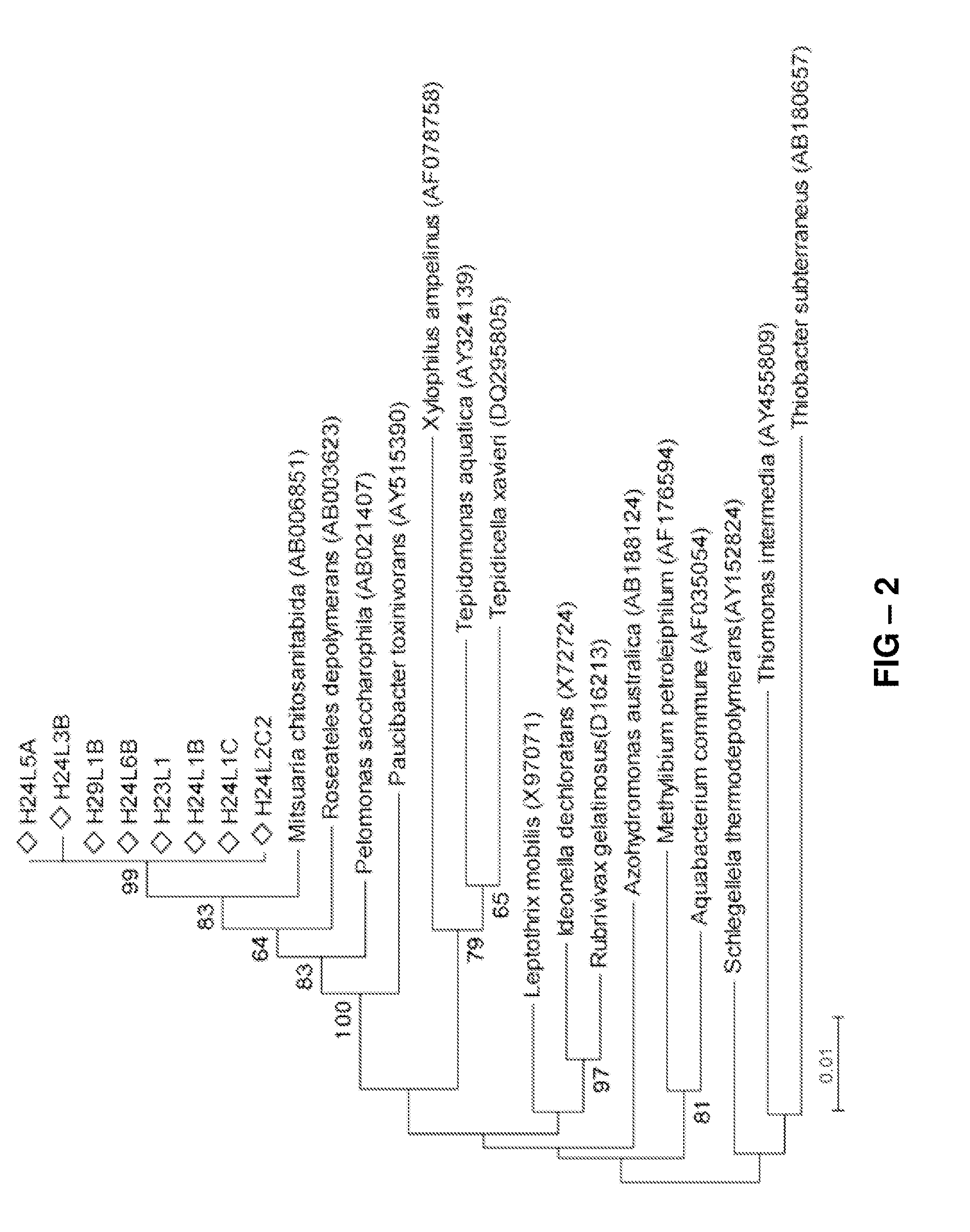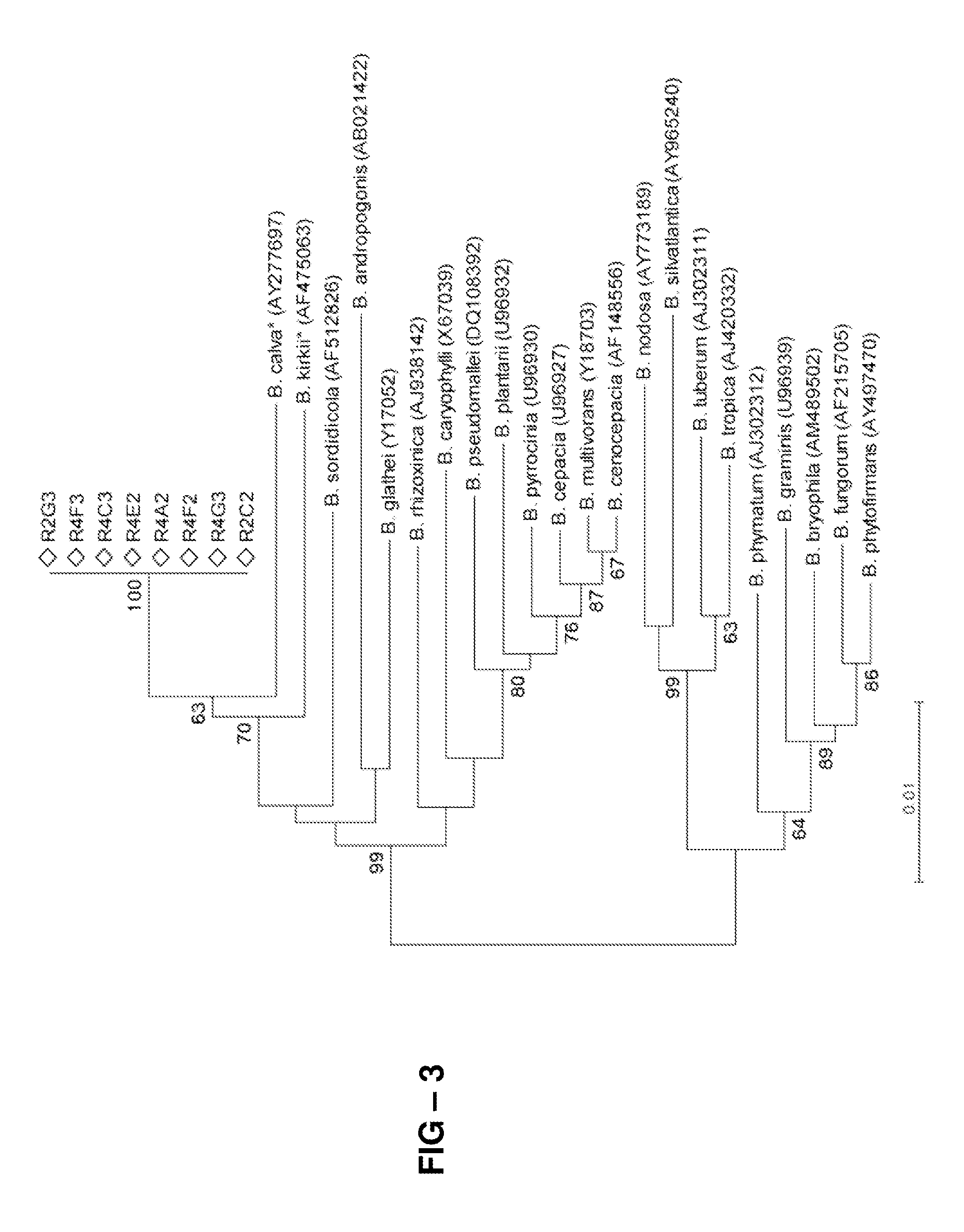Isolation of novel bacteria contributing to soilborne disease suppression
a technology of soilborne disease and novel bacteria, which is applied in the direction of microorganisms, bacteria based processes, biocide, etc., can solve the problems of severe economic losses, root and crown rot diseases caused by pathogens, and /i>spp. are a widespread and recurrent problem in plant production
- Summary
- Abstract
- Description
- Claims
- Application Information
AI Technical Summary
Benefits of technology
Problems solved by technology
Method used
Image
Examples
example 1
Classification of 16S Eubacterial Sequences Corresponding in Size to a Target TRF
[0075]The identity of bacteria giving rise to MspI generated TRF associated with disease suppression in the microbial community profiles (see Benítez M, et al (2007) Multiple statistical approaches of community fingerprint data reveal bacterial populations associated with general disease suppression arising from the application of different organic field management strategies. Soil Biology and Biochemistry 39, 2289-2301, incorporated by reference in its entirety) was first assessed by cloning TRF of the selected size range. Of 56 clones sequenced, 20 were confirmed as a targeted TRF (seven to M139, eight to M141 and five to M148). These sequences were compared to GenBank using blastn. Five M139 clones shared >90% sequence identity with one another, and likely arise from β-Proteobacteria; and, of these, four, recovered from three independent samples, shared >97% sequence identity to database members of t...
example 2
Culture-Collection Screening for M139 and M141 Isolates
[0078]Because no isolates with 100% sequence identity to the cloned markers had been previously identified, efforts were made to recover bacteria giving rise to the M139 and M141 markers. To do so, culture media favoring growth of Burkholderiales species related to the genera described above were selected. The isolates were obtained from the mixture of hay species that had resulted in damping-off suppression, and a 2-step PCR-based approach was used to screen the collection, first from pooled samples and then individually. Of the 704 isolates examined, eight, all isolated from Leptothrix strain medium had an exact sequence match to the M139 variable loop. The highest BLAST hit to a named species for all eight isolates was to Mitsuaria chitosanitabida (98-99% identity), followed by Roseateles depolymerans and Pelomonas aquatica or P. saccarophila (>97% identity), all belonging to the Genera Incertae Sedis. Sequence identity withi...
example 3
Characterization of Pathogen Inhibition and Disease Suppressive Activities
[0081]The association of the M139 and M141 TRF with in situ soilborne disease suppression (14) led us to hypothesize that the novel Mitsuaria and Burkholderia isolates obtained would express antagonistic activities towards diverse soilborne pathogens. Initially, the capacity of the isolates to reduce pathogen growth in vitro against was assayed. For the Mitsuaria isolates, inhibition was observed regardless of the pathogen tested (FIG. 4A), with the greatest frequency of inhibition expressed against Pythium aphanidermatum Phytophthora sojae, Rhizoctonia solani, and Alternaria solani, and the least against Pythium sylvaticum.
[0082]All of the Mitsuaria isolates from this study have chitinolytic activity in vitro (FIG. 5), which can relate to the broad-spectrum inhibition observed against the various fungi. Briefly, for each isolate tested (1-8) 7 μl of bacterial suspension (in water) were spotted on 1 / 10 TS aga...
PUM
 Login to View More
Login to View More Abstract
Description
Claims
Application Information
 Login to View More
Login to View More - R&D
- Intellectual Property
- Life Sciences
- Materials
- Tech Scout
- Unparalleled Data Quality
- Higher Quality Content
- 60% Fewer Hallucinations
Browse by: Latest US Patents, China's latest patents, Technical Efficacy Thesaurus, Application Domain, Technology Topic, Popular Technical Reports.
© 2025 PatSnap. All rights reserved.Legal|Privacy policy|Modern Slavery Act Transparency Statement|Sitemap|About US| Contact US: help@patsnap.com



